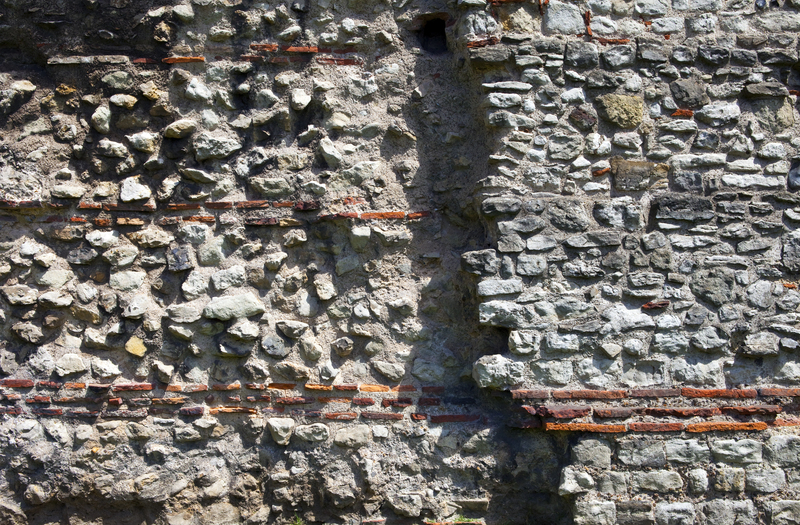Expert Tips for Removing Stubborn Burnt Residue from Stovetops
Posted on 27/08/2025
Expert Tips for Removing Stubborn Burnt Residue from Stovetops
Is your stovetop marred by tough, burnt-on stains that stubbornly refuse to disappear? You're not alone! Burnt residue can be a common culinary challenge, but with the right techniques and a little elbow grease, you can restore your cooktop to a sparkling shine. In this comprehensive guide, we'll share expert tips for removing stubborn burnt residue from stovetops and reveal the best cleaning methods for every type--be it glass, ceramic, or traditional gas ranges.
Understanding the Challenge: Why Burnt Stovetop Residue is So Tough
Burnt-on residue is more than just unsightly--it can affect the performance of your stovetop and even pose safety hazards. When food boils over or spills, the high heat may cause sugars, oils, and proteins to carbonize and adhere strongly to the surface. These stains can become increasingly difficult to remove if allowed to bake on with repeated use. Cleaning burnt stovetops the right way is crucial to maintain both aesthetics and functionality.
The Common Causes of Stubborn Burnt Stovetop Residue:
- Unattended spills and boil-overs during cooking
- Overheating sugary substances or sauces
- Ineffective or irregular cleaning routines
- Using improper cleaning agents that "set" stains rather than removing them

Preparing for Stovetop Cleaning: What You'll Need
Before tackling any stubborn stove stains, assembling the right supplies is key. Here is a checklist of stovetop cleaning essentials that are effective yet safe for most surfaces:
- Baking soda (an excellent, mild abrasive)
- White vinegar (a natural degreaser and deodorizer)
- Dish soap
- Soft sponges or microfiber cloths
- Plastic scraper or old credit card (for glass and ceramic tops)
- Razor blade (for glass stovetops--use with caution!)
- Non-scratch scrub brush
- Gloves (to protect your hands from chemicals and grime)
If you have a gas range, you may also want a small brush for cleaning burner heads and grates.
Step-by-Step Guide: How to Remove Burnt Residue from Stovetops
1. Safety First: Power Down and Cool Off
The first rule of removing burnt-on residue from stovetops is to turn off all burners and let the surface cool completely. Never attempt to clean a hot stovetop, as you risk burns and may set stains further.
2. Initial Debris Removal
- Begin by wiping the surface with a damp cloth or sponge to clear away any loose crumbs and debris.
- Remove stove grates, burners, and removable knobs, soaking them in hot, soapy water to loosen grime.
3. Creating a Natural Cleaning Paste
A paste made from baking soda and water works wonders as a gentle yet effective abrasive. Combine three parts baking soda and one part water, mixing until you have a spreadable consistency.
- Spread the paste generously over the burnt areas.
- Let it sit for at least 15-20 minutes (or longer for deeply set stains).
4. Vinegar Magic: Dissolving Residue
White vinegar is a powerful ally for breaking down tough, burnt-on gunk. Once the baking soda paste has soaked in, try spritzing vinegar over the affected zones. Enjoy the chemical reaction--the fizzing action helps lift stubborn residue!
5. Scrubbing Away
Using a non-scratch sponge or cloth, gently scrub the area in circular motions. For glass or ceramic tops, avoid steel wool or harsh scouring pads, which can cause damage.
- Use a plastic scraper or an old credit card to gently scrape off persistent bits.
- For severe stains on glass, consider a razor blade scraper held at a 45-degree angle--always use light pressure and keep the area wet to avoid scratches.
6. Rinse and Polish
- Wipe away all residue with a damp microfiber cloth.
- Buff the surface dry for a streak-free shine.
- Repeat any steps if necessary for particularly stubborn stains.
Specialized Tips for Different Stovetop Types
Removing Burnt Residue from Gas Stovetops
Gas stovetops have removable grates and burner caps that often trap burnt food and greasy stains. Here's how to handle them:
- Soak grates and burner caps in hot, soapy water for 30 minutes (add a tablespoon of baking soda for extra cleaning power).
- Use a non-scratch scrub brush or a paste of salt and baking soda to tackle tough spots.
- A toothbrush can help get into tight corners and burner holes. Avoid using metal objects that could scratch or block gas flow.
- Rinse everything thoroughly & dry completely before reassembling.
Ceramic & Glass Stovetops: Gentle is Key
These smooth surfaces are prone to scratching, so use only safe, non-abrasive cleaning methods:
- After applying a baking soda paste and allowing it to sit, use a microfiber cloth or a special glass-top cleaning pad.
- For hardened, burnt-on spills, carefully use a razor blade scraper (specifically designed for stovetops).
- Never use scouring powders or steel wool.
Electric Coil & Solid Plate Stovetops
Burnt residue often builds up around electric coils or on solid plates:
- Unplug the stove and remove the coils or plates.
- Scrub with a damp cloth and soapy water; for severe stains, use a baking soda paste.
- For tough burnt food, a commercial oven cleaner may be appropriate--carefully follow the instructions and rinse thoroughly.
Pro Hacks: Advanced Tricks for Stubborn Burnt Stovetop Residue
- Steam Cleaning: Place a wet towel on the burnt area and set your burner to low for a few minutes (for electric and gas stoves only). The steam softens residue for easier cleaning.
- Hydrogen Peroxide Boost: For tough, charred stains, combine hydrogen peroxide and baking soda for extra stain-lifting power.
- Commercial Cleaners: When DIY solutions aren't enough, consider specialized stovetop cleaners such as CeramaBryte for glass-tops or Bar Keepers Friend for multiple surfaces. Test on a hidden spot first.
- Magic Eraser Sponges: These work wonders for mild to moderately burnt-on marks, but always check compatibility with your specific stovetop.
What NOT to Do When Cleaning Burnt Stovetops
- Don't use metal scouring pads--they'll scratch and damage the surface.
- Never use oven cleaner on glass or ceramic cooktops unless labeled safe for such surfaces.
- Don't apply excessive force--patience and gentle repetition work better than harsh scrubbing.
- Do not attempt to clean when the appliance is still hot--this can cause burns and set stains further.
Maintenance Tips: Preventing Burnt Residue Buildup
An ounce of prevention is worth a pound of cure! Keep your stovetop clean and residue-free with these simple habits:
- Wipe after each use--quickly cleaning minor spills prevents them from burning on later.
- Boil-Over Protection--use larger pots or pans and monitor food, especially sugary sauces or starchy water.
- Deep clean weekly--even if it looks clean, a periodic deep clean prevents invisible buildup.
- Use liners (as appropriate)--many stovetops allow for easy-to-clean liners that catch spills before they burn.

FAQs: Burnt Stovetop Residue Removal
Are harsh chemicals necessary to clean burnt residue from stovetops?
No. Many burnt stains can be handled with natural ingredients like baking soda, vinegar, and mild dish soap. Commercial cleaners are an option for very tough stains, but always check for compatibility with your stovetop surface.
How often should I clean burnt residue from my stovetop?
Clean spills as soon as possible after the cooktop cools to prevent residue from burning on. For routine maintenance, wipe the surface after every use and deep clean weekly.
Can I use a razor blade on my glass stovetop?
Yes, but only if you use a designated razor scraper tool for glass. Work gently, keep the area wet, and hold the blade at a shallow angle to avoid scratches.
Conclusion: Restore Your Stovetop's Shine with Confidence
With these expert tips for removing stubborn burnt residue from stovetops, sparkling results are within your reach--no matter how tough the stain! Consistent care, a gentle approach, and the right kitchen supplies can transform a weary, scorched surface into a clean, gleaming cooktop you'll be proud to show off.
Remember, the best way to treat burnt residue is to prevent it--so make stovetop maintenance part of your regular kitchen routine. Happy cleaning!
- Ready to tackle even the most stubborn burnt stovetop stains? Follow these steps for success, and enjoy a cleaner, more efficient cooking experience!




